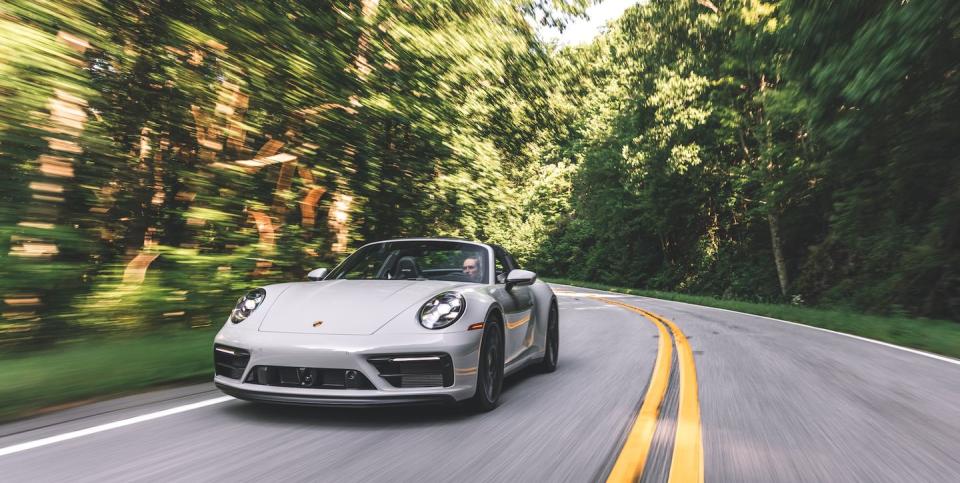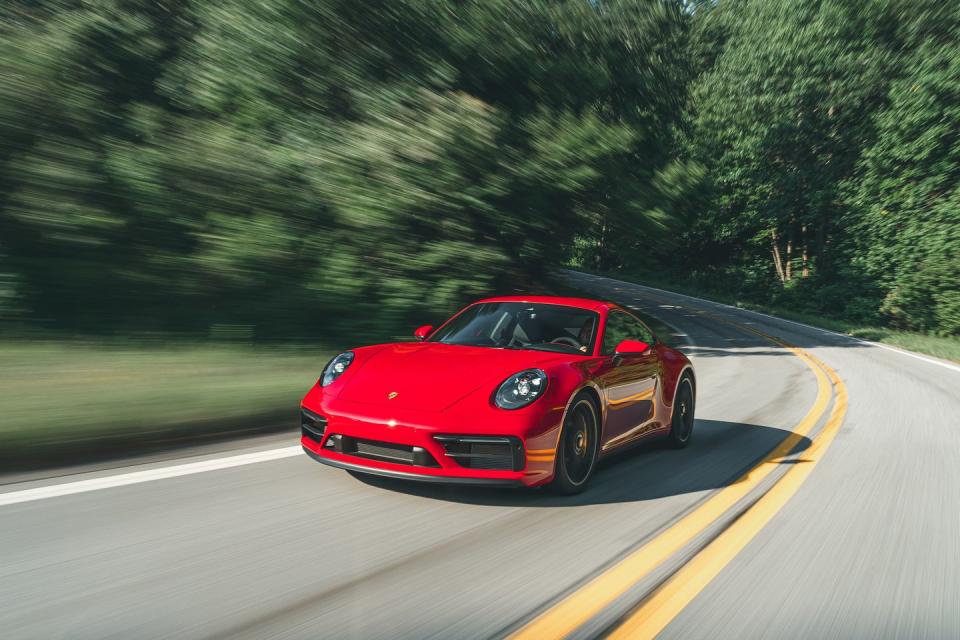The 2022 Porsche 911 GTS Still Hits the Sports Car Sweet Spot

The Carrera GTS has occupied a sweet spot in the Porsche 911 range for a while now. The GTS was initially a run-out special for the 997, but it was such a hit that Porsche made it a staple for the following generation. The formula is pretty simple: Take a Carrera S, give it a bit more power, add the performance options enthusiasts want, spec different exterior and interior trim, and sell it for less than the cost of adding all those options to a Carrera S. The appeal is obvious.
This time around Porsche is tweaking the formula ever so slightly. All GTS models now get larger brakes from the 911 Turbo, and all but the Targa get a unique chassis setup with stiffer spring rates, bigger anti-roll bars, and helper springs at the rear. According to Dr. Frank-Steffen Walliser, chief engineer for Porsche sports cars, the company decided to make a bigger step forward in terms of performance with the GTS because the new GT3 did the same, creating space in the process.
Of course the usual GTS accoutrements, visual and mechanical, are present. Most notably, extra boost pressure brings the 3.0-liter flat-six up to 473 horsepower and 420 lb-ft, increases of 30 hp and 30 lb-ft over the Carrera S. As ever, you get your choice of coupe or Cabriolet in either two- or four-wheel drive; the Targa remains four-wheel drive only. Carrera GTS coupes also get an optional lightweight package which reduces weight by 55 pounds via carbon-fiber bucket seats, lighter glass, a lighter lithium-ion battery, and a handful of other detail changes. (Price is yet to be determined for this pack, though note that the bucket seats cost $5900 separately.)

The end result is perhaps the best-looking version of the 992-generation 911 yet and a car that once again appears to sit in a sweet spot. But the reality is a bit more complex.
Porsche invited us to its North American headquarters in Atlanta to sample the first two 992 GTS models in the country, a rear-drive coupe and a Targa 4 GTS. Opposite ends of the GTS spectrum, with a day in the North Georgia mountains to suss them out.
The coupe had arguably the ideal enthusiast spec; manual transmission, lightweight package, carbon-ceramic brakes, forged center-lock wheels, rear-wheel steering, active anti-roll bars, and lots of Alcantara-like Race-Tex trim. It immediately struck me as one of the most 911-y feeling modern 911s I've yet driven.
Take note: Modern 991- and 992-generation 911s feel less rear-engined than all their predecessors thanks to a chassis layout that moves the engine slightly forward. This didn't turn the 911 into a mid-engine car, but the car lost some of its unique feel in the pursuit of better performance and stability.
In this GTS, though, the steering suggests the 911 of old. It's not as totally unfiltered as a manual rack in an air-cooled 911, but it still has a lot to say. This is up there with the best steering feel you can get in any car today, and further proof that electric power assistance doesn't mean the death of good steering. It's a real highlight.

The rest is as good as you'd expect. It's been over a year since I've driven a Carrera S, so I can’t say if the extra power can be perceived without a stopwatch, but the GTS is a seriously quick car. Bear in mind that this car has about the same power as a 997 Turbo and damn near as much as today's GT3. Turbo torque means the GTS has additional flexibility over the GT3; as a result, it feels quicker on the road. Lag is virtually nonexistent despite jumping from 16 to 18.6 psi of boost, and like all iterations of this three-liter, it's rev-happy too. The removal of sound deadening is good as well, as it helps boost intake noise in the cabin to give the GTS a unique sonic character.

 Yahoo Autos
Yahoo Autos 